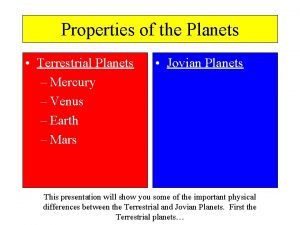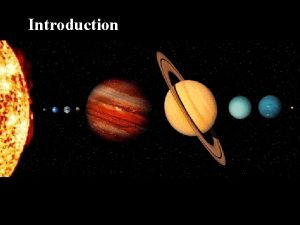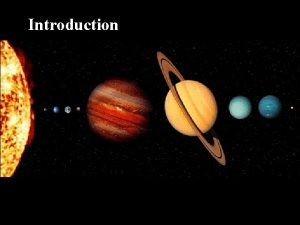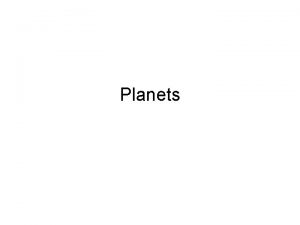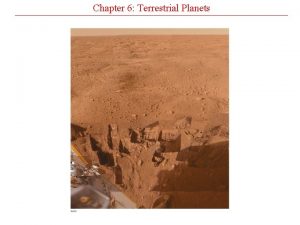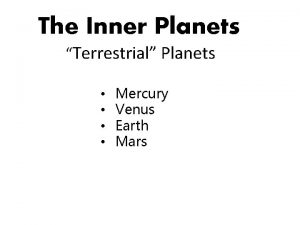THE INNER PLANETS Terrestrial Planets O 4 planets






- Slides: 6

THE INNER PLANETS

Terrestrial Planets O 4 planets closest to sun are called the inner planets O Mercury, Venus, Earth and Mars O Terrestrial means land based - similar to earth O Consist mostly of solid rock, with a metal core O Do NOT have rings O Have 0, 1 or 2 moons

Mercury O Closest to sun O Short orbit (revolution) period of 88 days O Romans named planet after the swift messenger of the gods O Rotates on axis very slowly each day is 59 Earth days O Has no moons O SURFACE- Pictures reveal large numbers of craters that suggest Mercury was once volcanic O Cannot see surface clearly because of sun glare O ATMOSPHERE- Thin atmosphere—due to closeness of sun and size of planet O Lack of atmosphere causes large temperature range O Daytime: 430 C (806 F)- too hot for liquid water O Nighttime: -170 C (-274 F)

Venus O Second planet from O Orbit period is 225 days O Rotates slowly on axis- every 243 days O Rotates opposite of other planets O Sun rises in the west and sets in the east O Has no moons O Very much like earth in size, mass and density O SURFACE- Astronomers believe that Venus once had oceans but evaporated O Surface is basalt and granite O Features: domes and mountains, volcanoes and lava plains O ATMOSPHERE- Dense atmosphere provides insulation causing high temperatures O Average temperature is 470 C (878 F) which is too hot for liquid water O Appears very bright; sometimes called “morning star” or “evening star”

Earth O Third planet from sun O Far enough from sun to make life possible O Only planet able to do so O Orbit period is 365. 2 days O Completes one rotation in 23 hours and 56 minutes O 5 th largest planet O Has one moon O SURFACE- Extensive geologic history O ATMOSPHERE- Carbon dioxide escapes allowing heat to escape; contains large amounts of oxygen O Maintains average temperature of 15 C (59 F) O Water can exist as a liquid (only planet with oceans)

Mars O Fourth planet from sun O Orbit period is 687 days O Rate of rotation is 24 hours and 37 minutes O Tilt on axis is very similar to earth O Seasons much similar O Has two moons; Phobos and Deimos O SURFACE- geologically active, large surfaces covered with lava O Volcanoes largest in solar system O Large canyons O Soil is reddish in color due to iron-rich minerals O ATMOSPHERE- Temperature and pressure too low for liquid water (exists as ice) O Average temperature is -50 C (-58 F) O Astronomers think that Mars was once warmer and wetter due to evidence of erosion O No convincing evidence that life exists on Mars O Recent evidence shows that primitive life may have existed at one time





